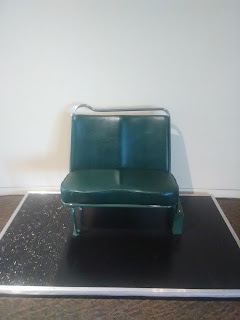 |
| Photo by Farshid Assassi/ Assassi Productions |
Happy New Decade! I just needed to recover from the madness of the holidays, regroup myself, and rethink my priorities in this new phase.
As we all know, today is the day to celebrate and give honor to one of America's civil rights icon, Martin Luther King Jr.
I made use of this great day and took advantage of free admission to the National Underground Railroad Freedom Center.
The Underground Railroad was a network of secret routes and safe houses established in the United States during the early to mid-1800s and used by enslaved African-Americans to escape into free states and Canada. The scheme was assisted by abolitionists and others sympathetic to the cause of the escapees.
Cincinnati was a very important city in the Underground Railroad as it was near the Mason-Dixon Line-that's the Ohio River for those who are not aware. The river served as a buffer between free (Ohio) and slave (Kentucky) states. Fun Fact: From Dixie Terminal (now Great American Insurance) to the Ohio River, a tunnel was constructed on the 3rd St side of the building on the site of the former Lafayette & Franklin Banks for use for transporting bullion by the Underground Railroad to transport slaves.
The NURFC opened in 2004 as part of a new group of museums of conscience, along with the Museum of Tolerance, the United States Holocaust Memorial Museum and the National Civil Rights Museum.
There are revolving exhibits as well as lecture series, concerts, and other special events that take place here.
And now, for some highlights:
 |
| Exterior of slave pen |
 |
| Inside the slave pen |
The man artifact for the NURFC is this slave pen.
Built in 1830, it was the only known surviving rural slave
jail, previously used to house slaves prior to their being shipped to auction.
The structure was moved from a farm in Mason County, Kentucky, where a tobacco barn had been built around it. Visitors
to the museum can walk through the holding pen and touch its walls. The first
names of some of the slaves believed to have been held in the pen are listed on
a wooden slab in the pen's interior; they were documented in records kept by
slave traders who used the pen.
Now, that being said, Cincinnati has a very rich connection to Martin Luther King. He was close buddies with Reverend Fred Shuttlesworth, late pastor of the Greater New Light Baptist Church right here in Cincinnati. King, Shuttlesworth, and the Rev Ralph Abernathy made up the Civil Rights "Big Three".
To learn more about their encounters, click here.
Today, we all need to step back and take inventory of the freedom that we Americans sometimes take for granted and strive to be our best everyday, no matter what we do for and within our communities. King gave his best so that we can be our best.










